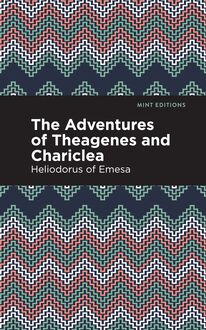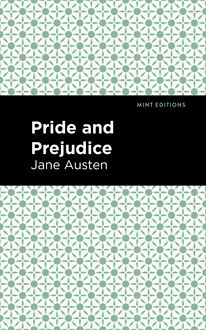-
 Univers
Univers
-
 Ebooks
Ebooks
-
 Livres audio
Livres audio
-
 Presse
Presse
-
 Podcasts
Podcasts
-
 BD
BD
-
 Documents
Documents
-
- Cours
- Révisions
- Ressources pédagogiques
- Sciences de l’éducation
- Manuels scolaires
- Langues
- Travaux de classe
- Annales de BEP
- Etudes supérieures
- Maternelle et primaire
- Fiches de lecture
- Orientation scolaire
- Méthodologie
- Corrigés de devoir
- Annales d’examens et concours
- Annales du bac
- Annales du brevet
- Rapports de stage
La lecture à portée de main
Vous pourrez modifier la taille du texte de cet ouvrage
Découvre YouScribe en t'inscrivant gratuitement
Je m'inscrisDécouvre YouScribe en t'inscrivant gratuitement
Je m'inscrisEn savoir plus
Vous pourrez modifier la taille du texte de cet ouvrage
En savoir plus

Description
Esther is a free-thinking young woman who enjoys her independence. Her strained relationship with her father usually keeps her far from the church, until she is hired to paint a mural for a Christian church in New York. There, the pastor, Stephen, is in awe of Esther’s work. He makes a consistent effort to connect with her, memorized by her talent. Though she initially recoils from his attention, Esther starts to fall in love with Stephen after he helps her through a family matter. Growing closer as her father’s health declines, Esther and Stephen connect despite their differences. From the start, Esther and Stephen must face conflicts in personality, faith, intellect, and social beliefs. Their relationship is built on rocky ground, threatening Esther’s independence, but offering comfort in her time of need. Intrigued by Stephen’s faith and moved by her love for him, Esther tries to become religious, even though it conflicts with her reason and threatens her independence as a woman. Though her love for Stephen is strong, Esther struggles to decide if it is more important than her autonomy and if his faith is any match for her beliefs of intellectual reason.
Clashing personalities, sexism, and the battle between faith and reason make a clever and thoughtful setting for this romance, challenging Esther and Stephen’s relationship with philosophical, theological, and social debate. Esther, written by Henry Adams, examines common ethical and intellectual differences in society and the effect such contrasts have on both romantic and platonic relationships. Though it was published over one hundred years ago, Esther depicts problems that current readers can relate to, and Adam’s wit offers surprising insight and depth.
Now presented with a new and appealing cover design and font, paired with classic, well-developed characters, and a lively setting, John Adam’s Esther is easier than ever to enjoy. With a deep, complicated romance and thoughtful representation of the forever relevant debate between reason and religion, Esther is an American classic well deserving of praise and conversation.
Sujets
Informations
| Publié par | Mint Editions |
| Date de parution | 01 décembre 2020 |
| Nombre de lectures | 0 |
| EAN13 | 9781513272696 |
| Langue | English |
| Poids de l'ouvrage | 2 Mo |
Informations légales : prix de location à la page 0,0400€. Cette information est donnée uniquement à titre indicatif conformément à la législation en vigueur.
Extrait
Esther
Henry Adams
Esther was first published in 1884.
This edition published by Mint Editions 2020.
ISBN 9781513267692 | E-ISBN 9781513272696
Published by Mint Editions®
minteditionbooks.com
Publishing Director: Jennifer Newens
Design & Production: Rachel Lopez Metzger
Typesetting: Westchester Publishing Services
C ONTENTS
Chapter 1
Chapter 2
Chapter 3
Chapter 4
Chapter 5
Chapter 6
Chapter 7
Chapter 8
Chapter 9
Chapter 10
Chapter 1
T he new church of St. John’s, on Fifth Avenue, was thronged the morning of the last Sunday of October, in the year 1880. Sitting in the gallery, beneath the unfinished frescoes, and looking down the nave, one caught an effect of autumn gardens, a suggestion of chrysanthemums and geraniums, or of October woods, dashed with scarlet oaks and yellow maples. As a display of austerity the show was a failure, but if cheerful content and innocent adornment please the Author of the lilies and roses, there was reason to hope that this first service at St. John’s found favor in his sight, even though it showed no victory over the world or the flesh in this part of the United States. The sun came in through the figure of St. John in his crimson and green garments of glass, and scattered more color where colors already rivaled the flowers of a prize show; while huge prophets and evangelists in flowing robes looked down from the red walls on a display of human vanities that would have called out a vehement Lamentation of Jeremiah or Song of Solomon, had these poets been present in flesh as they were in figure.
Solomon was a brilliant but not an accurate observer; he looked at the world from the narrow stand-point of his own temple. Here in New York he could not have truthfully said that all was vanity, for even a more ill-natured satirist than he must have confessed that there was in this new temple to-day a perceptible interest in religion. One might almost have said that religion seemed to be a matter of concern. The audience wore a look of interest, and, even after their first gaze of admiration and whispered criticism at the splendors of their new church, when at length the clergyman entered to begin the service, a ripple of excitement swept across the field of bonnets until there was almost a murmur as of rustling cornfields within the many colored walls of St. John’s.
In a remote pew, hidden under a gallery of the transept, two persons looked on with especial interest. The number of strangers who crowded in after them forced them to sit closely together, and their low whispers of comment were unheard by their neighbors. Before the service began they talked in a secular tone.
“Wharton’s window is too high-toned,” said the man.
“You all said it would be like Aladdin’s,” murmured the woman.
“Yes, but he throws away his jewels,” rejoined the man. “See the big prophet over the arch; he looks as though he wanted to come down—and I think he ought.”
“Did Michael Angelo ever take lessons of Mr. Wharton?” asked the woman seriously, looking up at the figures high above the pulpit.
“He was only a prophet,” answered her companion, and, looking in another direction, next asked:
“Who is the angel of Paradise, in the dove-colored wings, sliding up the main aisle?”
“That! O, you know her! It is Miss Leonard. She is lovely, but she is only an angel of Paris.”
“I never saw her before in my life,” he replied; “but I know her bonnet was put on in the Lord’s honor for the first time this morning.”
“Women should take their bonnets off at the church door, as Mussulmen do their shoes,” she answered.
“Don’t turn Mahommedan, Esther. To be a Puritan is bad enough. The bonnets match the decorations.”
“Pity the transepts are not finished!” she continued, gazing up at the bare scaffolding opposite.
“You are lucky to have any thing finished,” he rejoined. “Since Hazard got here every thing is turned upside down; all the plans are changed. He and Wharton have taken the bit in their teeth, and the church committee have got to pay for whatever damage is done.”
“Has Mr. Hazard voice enough to fill the church?” she asked.
“Watch him, and see how well he’ll do it. Here he comes, and he will hit the right pitch on his first word.”
The organ stopped, the clergyman appeared, and the talkers were silent until the litany ended and the organ began again. Under the prolonged rustle of settling for the sermon, more whispers passed.
“He is all eyes,” murmured Esther; and it was true that at this distance the preacher seemed to be made up of two eyes and a voice, so slight and delicate was his frame. Very tall, slender and dark, his thin, long face gave so spiritual an expression to his figure that the great eyes seemed to penetrate like his clear voice to every soul within their range.
“Good art!” muttered her companion.
“We are too much behind the scenes,” replied she.
“It is a stage, like any other,” he rejoined; “there should be an entre-acte and drop-scene. Wharton could design one with a last judgment.”
“He would put us into it, George, and we should be among the wicked.”
“I am a martyr,” answered George shortly.
The clergyman now mounted his pulpit and after a moment’s pause said in his quietest manner and clearest voice:
“He that hath ears to hear, let him hear.”
An almost imperceptible shiver passed through Esther’s figure.
“Wait! he will slip in the humility later,” muttered George.
On the contrary, the young preacher seemed bent on letting no trace of humility slip into his first sermon. Nothing could be simpler than his manner, which, if it had a fault, sinned rather on the side of plainness and monotony than of rhetoric, but he spoke with the air of one who had a message to deliver which he was more anxious to give as he received than to add any thing of his own; he meant to repeat it all without an attempt to soften it. He took possession of his flock with a general advertisement that he owned every sheep in it, white or black, and to show that there could be no doubt on the matter, he added a general claim to right of property in all mankind and the universe. He did this in the name and on behalf of the church universal, but there was self-assertion in the quiet air with which he pointed out the nature of his title, and then, after sweeping all human thought and will into his strong-box, shut down the lid with a sharp click, and bade his audience kneel.
The sermon dealt with the relations of religion to society. It began by claiming that all being and all thought rose by slow gradations to God,—ended in Him, for Him—existed only through Him and because of being His.
The form of act or thought mattered nothing. The hymns of David, the plays of Shakespeare, the metaphysics of Descartes, the crimes of Borgia, the virtues of Antonine, the atheism of yesterday and the materialism of to-day, were all emanations of divine thought, doing their appointed work. It was the duty of the church to deal with them all, not as though they existed through a power hostile to the deity, but as instruments of the deity to work out his unrevealed ends. The preacher then went on to criticise the attitude of religion towards science. “If there is still a feeling of hostility between them,” he said, “it is no longer the fault of religion. There have been times when the church seemed afraid, but she is so no longer. Analyze, dissect, use your microscope or your spectrum till the last atom of matter is reached; reflect and refine till the last element of thought is made clear; the church now knows with the certainty of science what she once knew only by the certainty of faith, that you will find enthroned behind all thought and matter only one central idea,—that idea which the church has never ceased to embody,— I am! Science like religion kneels before this mystery; it can carry itself back only to this simple consciousness of existence. I am is the starting point and goal of metaphysics and logic, but the church alone has pointed out from the beginning that this starting-point is not human but divine. The philosopher says—I am, and the church scouts his philosophy. She answers:—No! you are not , you have no existence of your own. You were and are and ever will be only a part of the supreme I am , of which the church is the emblem.”
In this symbolic expression of his right of property in their souls and bodies, perhaps the preacher rose a little above the heads of his audience. Most of his flock were busied with a kind of speculation so foreign to that of metaphysics that they would have been puzzled to explain what was meant by Descartes’ famous Cogito Ergo Sum , on which the preacher laid so much stress. They would have preferred to put the fact of their existence on almost any other experience in life, as that “I have five millions,” or, “I am the best-dressed woman in the church,—therefore I am somebody.” The fact of self-consciousness would not have struck them as warranting a claim even to a good social position, much less to a share in omnipotence; they knew the trait only as a sign of bad manners. Yet there were at least two persons among the glorified chrysanthemums of St. John’s Garden this day, who as the sermon closed and the organ burst out again, glanced at each other with a smile as though they had enjoyed their lecture.
“Good!” said the man. “He takes hold.”
“I hope he believes it all,” said his companion.
“Yes, he has put his life into the idea,” replied the man. “Even at college he would have sent us all off to the stake with a sweet smile, for the love of Christ and the glory of the English Episcopal Church.”
The crowd soon began to pour slowly out of the building and the two observers were swept along with the rest until at length they found themselves outside, and strolled down the avenue. A voice from behind stopped them.
“Esther!” it called.
Esther turned and greeted the caller as aunt. She was a woman of about fifty, still rather han
-
 Univers
Univers
-
 Ebooks
Ebooks
-
 Livres audio
Livres audio
-
 Presse
Presse
-
 Podcasts
Podcasts
-
 BD
BD
-
 Documents
Documents
-
Jeunesse
-
Littérature
-
Ressources professionnelles
-
Santé et bien-être
-
Savoirs
-
Education
-
Loisirs et hobbies
-
Art, musique et cinéma
-
Actualité et débat de société
-
Jeunesse
-
Littérature
-
Ressources professionnelles
-
Santé et bien-être
-
Savoirs
-
Education
-
Loisirs et hobbies
-
Art, musique et cinéma
-
Actualité et débat de société
-
Actualités
-
Lifestyle
-
Presse jeunesse
-
Presse professionnelle
-
Pratique
-
Presse sportive
-
Presse internationale
-
Culture & Médias
-
Action et Aventures
-
Science-fiction et Fantasy
-
Société
-
Jeunesse
-
Littérature
-
Ressources professionnelles
-
Santé et bien-être
-
Savoirs
-
Education
-
Loisirs et hobbies
-
Art, musique et cinéma
-
Actualité et débat de société
- Cours
- Révisions
- Ressources pédagogiques
- Sciences de l’éducation
- Manuels scolaires
- Langues
- Travaux de classe
- Annales de BEP
- Etudes supérieures
- Maternelle et primaire
- Fiches de lecture
- Orientation scolaire
- Méthodologie
- Corrigés de devoir
- Annales d’examens et concours
- Annales du bac
- Annales du brevet
- Rapports de stage












